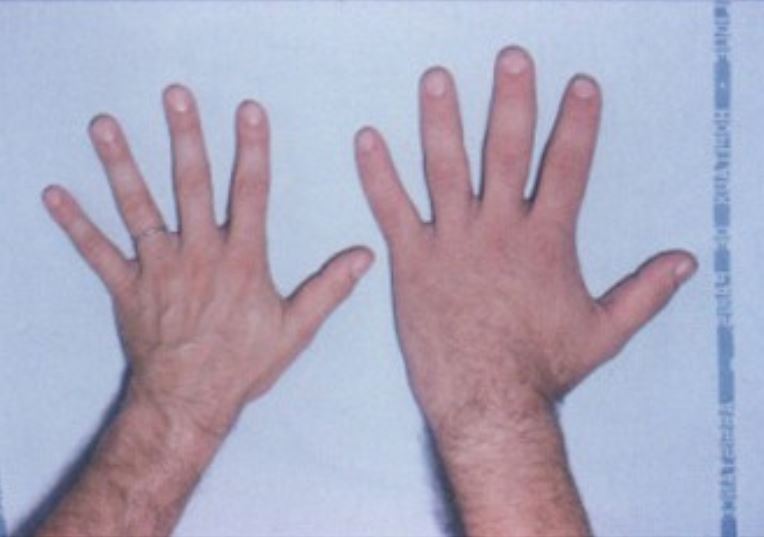Playlist
Show Playlist
Hide Playlist
Pituitary Case: 54-year-old Man with Fatigue and Joint Pain
-
Slides 01-02-01 Adrenal Pituitary.pdf
-
Reference List Endocrinology.pdf
-
Reference List Pituitary and Hypothalamic Disorders.pdf
-
Download Lecture Overview
00:01 Let's go on to a case. 00:03 A 54-year old man presented to his doctor complaining of fatigue due to poor sleep for over one year. 00:10 On further questioning, he complains of joint pain and difficulty removing his wedding ring. 00:16 More recently, he has noted wider spaces between the teeth of his lower jaw. 00:22 On exam, his vital signs are unremarkable. 00:26 He has coarse facial features with a prominent jaw and an enlarged tongue. 00:31 When comparing his face to his driver's license photo from five years earlier, these features are all new. 00:38 What is the best test to make the diagnosis? So, in reviewing the history and presentation of this patient, we note clinically that he is hypertensive, he has sleep disturbances, probably from sleep apnea, joint pain, and enlarging hands and feet, which are suggestive of acromegaly. 01:01 Furthermore, why the spacing of the teeth of the lower jaw is the first sign of growth hormone excess, and this has been noted in this case as well where he has a prominence of the lower jaw. 01:15 Macroglossia is enlargement of the tongue. 01:18 Initially, this presents with teeth notching in the side of the tongue as the tongue expands within the mouth. 01:26 As acromegaly involves, the tongue may actually protrude from the mouth and also contribute to his sleep apnea when lying recumbent. 01:36 These images display some of the clinical features of acromegaly. 01:41 The image on the left shows gross macroglossia where the tongue is significantly enlarged. 01:48 The right image demonstrates spacing in the lower jaw between the teeth, again a very significant finding in acromegaly and one of the earliest signs of facial feature changes that you see with growth hormone excess. 02:04 In these images, the image on the left reveals the facial features of a patient with advanced acromegaly. 02:11 Here you see widening and thickening of the nose, obvious cheekbones, a bulging forehead, and thickening of the lips. 02:20 In the right image, you see a normal hand juxtaposed with the hand of a patient with acromegaly on the right. 02:28 The fingers and hands are thickened and coarsened, and this is the obvious reason why patients would present with difficulty putting on or removing rings. 02:40 Acromegaly is strongly suspected in this particular case based on the clinical presentation, and the next best test would be checking in IGF-1 level. 02:51 Excess growth hormone is confirmed with an oral glucose tolerance test because glucose normally suppresses growth hormone levels, and then finally, a pituitary MRI should be obtained to assess for an anterior pituitary mass.
About the Lecture
The lecture Pituitary Case: 54-year-old Man with Fatigue and Joint Pain by Michael Lazarus, MD is from the course Pituitary and Hypothalamic Disorders.
Included Quiz Questions
If the serum IGF-1 concentration is significantly elevated, a diagnosis of acromegaly can be confirmed if…?
- …the serum growth hormone level is not suppressed after oral glucose administration.
- …a cerebellar tumor is seen on an MRI of the head.
- …the patient has sleep apnea and difficulty removing a wedding ring.
- …the serum growth hormone level is low during most of the day but becomes elevated at night or after exercise.
Customer reviews
5,0 of 5 stars
| 5 Stars |
|
1 |
| 4 Stars |
|
0 |
| 3 Stars |
|
0 |
| 2 Stars |
|
0 |
| 1 Star |
|
0 |
I am not very fond of Endocrinology and I do not know why, because I am a physician scientist myself. But this Lecturer Dr. Lazarus is very good explaining things.




